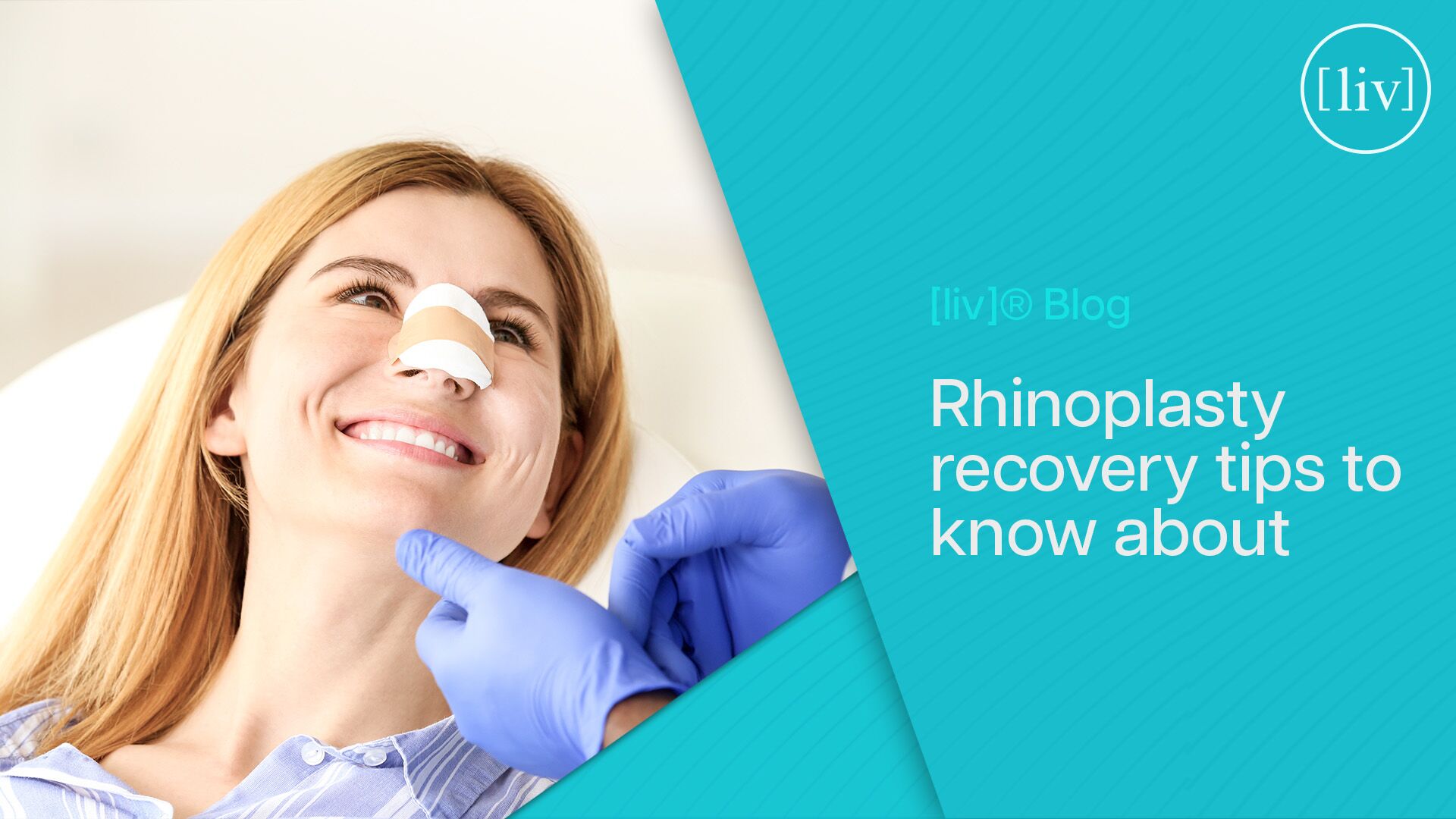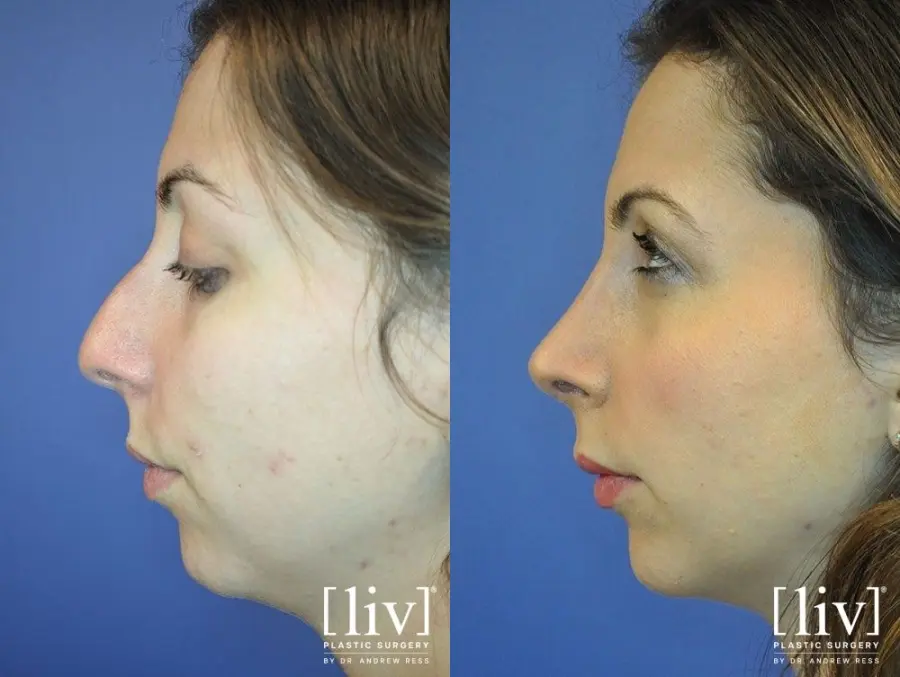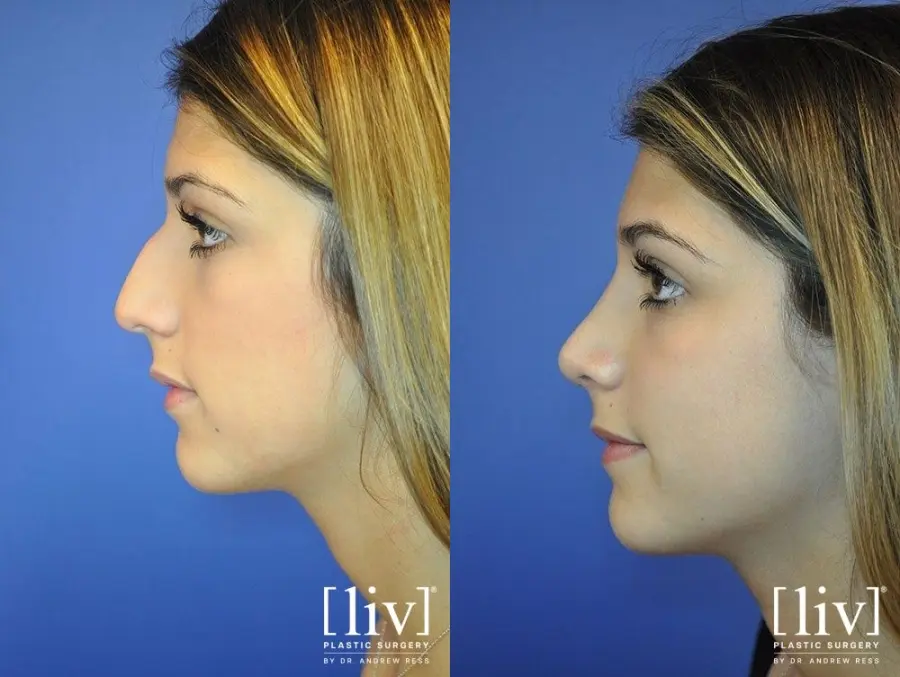Celebrate Mother's Day with Dr. Andrew Ress at [liv]
May 08, 2025
Shine Bright This Holiday Season: Unveil Your Best Self!
December 18, 2024

UPDATED April 13, 2024
Rhinoplasty recovery timeline is of interest to everyone who is about to subject to rhinoplasty surgery (or to put it in a more popular manner – nose job), or already has.
Rhinoplasty is one of the most popular plastic surgery procedures in the United States, not to mention in the world. It mainly owes its’ popularity to its’ ability to provide dramatic results and balance out the architecture of the face.
Nose is a focal point of everyone’s face that determines facial appearance, and even just a little improvement can make a huge difference, but aesthetic reasons are not the only ones to succumb to rhinoplasty – it can address a variety of issues such as nasal deviation and breathing issues.
In this blog post we will give you a general idea what can you expect after the surgery and during the rhinoplasty recovery period, along with tips how to make it as pleasant as possible.
Pretty much as with any other surgery, the nose job recovery surgery also begins with having the right expectations.
For instance, many patients assume that nose surgery will be painful, but what they end up being told is that the pain is minimal actually, and that it can be used to managed pretty easily with right meds.
Unlike pain, congestion is actually the problem. Once you’re done with the procedure, you will feel stuffy, without the ability to breathe or smell properly, and you will probably feel the pressure in your ears too. This is something you should be aware of, but not something to panic about – it will get better over the course of a few days, and here is how rhinoplasty recovery day by day looks like.

As far as nose job recovery goes, most patients can expect to return to work within two weeks of the procedure. However, depending on the degree you went to with the procedure, it may take 4-6 weeks for the swelling to subside completely.
The first 2 to 3 days after surgery you will feel mild moderate pain, but nothing that can’t be managed through meds, as well as swelling. You may also experience nausea, which usually happens as a result of combination of anesthesia effects and swallowed blood.
During this period you should sleep on your back with your head elevated by pillows (or a memory foam wedge pillow) so you could limit the swelling. You should also restrict physical activity to light walking and refrain from taking aspirin. Staying hydrated during this period will also help you minimize pain and improve recovery.
As these were the symptoms you would feel during the initial couple of days after surgery, let’s take a look at a longer term rhinoplasty recovery.
* KEEP YOUR HEAD ELEVATED (https://amzn.to/43W125Q) * USE ICE OR GEL PACKS OFTEN TO REDUCE SWELLING (https://amzn.to/4aPUibO) *NASAL IRRIGATION WITH SINUS RINSE BOTTLE WILL HELP OPEN YOUR NASAL PASSAGES (https://amzn.to/3W1y827). USE DISTILLED WATER ONLY
Once you wrap up your first week after surgery, you are free to resume your normal activities, but still try and refrain from any strenuous activity. Any splints or stitches you have are usually removed by the end of the week 1 or2, while pain, bruising and swelling will diminish greatly.
However, you won’t be able to see the results of the procedure just yet.
You've made it this far. Time to take the Splint Off!!
Week two mark is significant in terms of reduced bruising and swelling– to the point its’ basically unnoticeable to the casual observer. During week two you will feel comfortable enough to return to work if you haven't already. You can resume some mild exercise such as walking.
During week 3 of rhinoplasty recovery timeline, you might still feel some nasal blockage, but far less than during first week. Up to this point the swelling has settled enough to be happy with what you see and to be comfortable in your social interactions and return to a full social schedule.
By the end of your first month of rhinoplasty recovery, you will be able to entirely resume your physical activity and exercise. Swelling is still a little bit present on the tip of the nose, but has very much improved over the bridge.
Be on the lookout for excessive bone regrowth or scar tissue. Your surgeon can intervene with a simple cortisone injection to get you back on track.
When you hit three months of rhinoplasty recovery, you will notice that about 80% of the swelling is gone, but your tip will still feel a little numb.
A sign that numbness wll resolve is a pins and needles sensation called parasthesias.
It takes an entire year for the tip of your nose to fully show all the detail that was created during surgery.
Once you hit the one year mark of rhinoplasty recovery timeline, you will notice that the majority of nasal swelling is gone and that nose tip looks and feels refined. However, take note that it can take up to two or even three years for the final result to take place, depending on your skin thickness and the how much surgery you’ve done.
This particularly applies to patients who have undergone a revision surgery.
Some of our rhinoplasty recovery tips are definitely something that can help you go through the rhinoplasty recovery period much easier.
Rhinoplasty recovery time actually requires some time off, which is why we highly recommend taking at least a week off from work or school.
The first reason for doing so is that you will be able to rest, sleep more and relax, which will ultimately help you recover faster, and additionally, if you have some bruising or swelling, the majority of it should subside by the end of the week one.
In order to reduce persistent swelling, you can use cold compresses and ice packs to keep it at bay, although some minor portion of it will stay present for at least a year. You can always ask your plastic surgeon for additional advice regarding this issue.
During rhinoplasty recovery time, your nose will be especially prone to injury, which is why you need to take whatever precautions to safeguard your nose.
In case you get hurt doing sports or due to some accident, this can really set back your rhinoplasty recovery for weeks, and put you in line for another surgery.
This is why it is mandatory to avoid any strenuous activity and exercise during the initial period of your rhinoplasty recovery, as it can really do some damage or start a NOSEBLEED.
Since you will be breathing through your mouth for some time during your rhinoplasty recovery period, you will probably obtain a dry throat, but there are some simple solutions that will help you manage this.
You can put a humidifier beside your bed while you rest, drinks a lot of teas, especially with honey, and take throat pastilles to that will provide temporary relief.
Rhinoplasty recovery period should be followed by some basic steps of self-care, that will help speed it up and make it more comfortable.
Drinking plenty of water and keeping yourself hydrated will help your body through the healing process, along with resting as much as you can.

Always follow up on the advice of your surgeon and go for all follow up appointments – this is of great importance.
Your surgeon might need to remove packing materials or stitching from your nose, depending on the type of rhinoplasty you’ve underwent. Aside from that, your surgeon will also need to take note on any possible signs of swelling, ensuring you’re healing the way you should.
Last but not least, these are some things you should avoid doing during your rhinoplasty recovery.
Along with these tips, also comes an advice – schedule a consultation with your rhinoplasty surgeon in Boca Raton before the procedure. A board certified surgeon such as our Dr Ress will answer all the questions you might have, and give all the necessary advice and tips how to go through your rhinoplasty recovery period properly.
May 08, 2025
December 18, 2024
Copyright © Liv Plastic Surgery 2026. All Rights Reserved

Consultations are complimentary in person or virtual.
We love our out of town patients!
